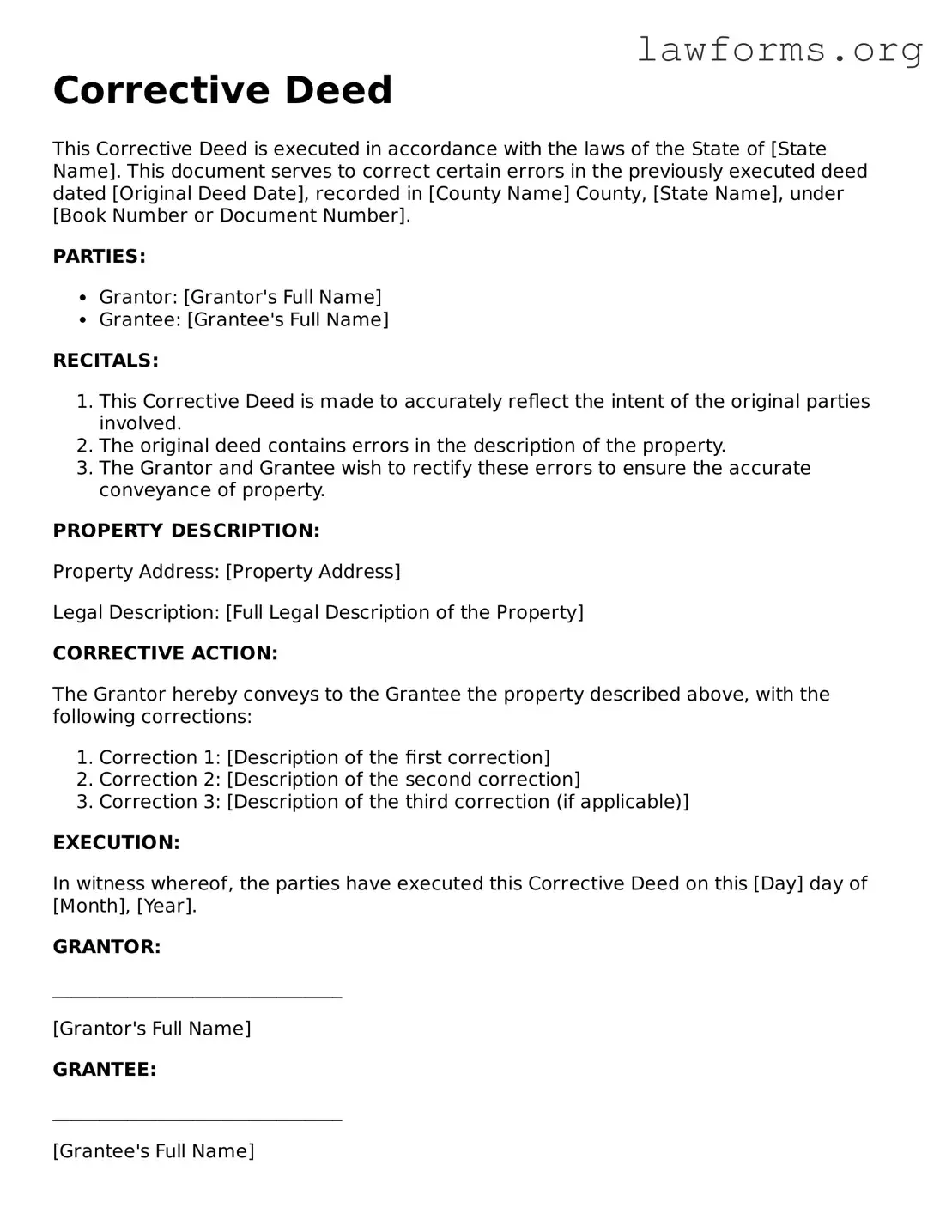Corrective Deed
This Corrective Deed is executed in accordance with the laws of the State of [State Name]. This document serves to correct certain errors in the previously executed deed dated [Original Deed Date], recorded in [County Name] County, [State Name], under [Book Number or Document Number].
PARTIES:
- Grantor: [Grantor's Full Name]
- Grantee: [Grantee's Full Name]
RECITALS:
- This Corrective Deed is made to accurately reflect the intent of the original parties involved.
- The original deed contains errors in the description of the property.
- The Grantor and Grantee wish to rectify these errors to ensure the accurate conveyance of property.
PROPERTY DESCRIPTION:
Property Address: [Property Address]
Legal Description: [Full Legal Description of the Property]
CORRECTIVE ACTION:
The Grantor hereby conveys to the Grantee the property described above, with the following corrections:
- Correction 1: [Description of the first correction]
- Correction 2: [Description of the second correction]
- Correction 3: [Description of the third correction (if applicable)]
EXECUTION:
In witness whereof, the parties have executed this Corrective Deed on this [Day] day of [Month], [Year].
GRANTOR:
_______________________________
[Grantor's Full Name]
GRANTEE:
_______________________________
[Grantee's Full Name]
NOTARY PUBLIC:
State of [State Name], County of [County Name]
Subscribed and sworn to before me this [Day] day of [Month], [Year].
_______________________________
Notary Public
My Commission Expires: [Expiration Date]
